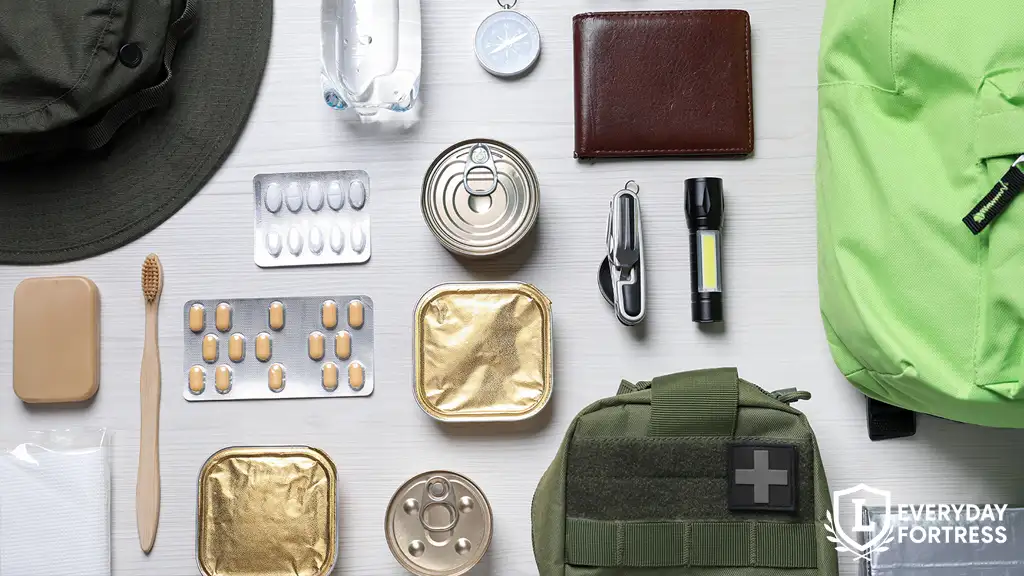Disasters are unpredictable. Whether it’s a sudden blackout, flood, wildfire, or infrastructure failure, being unprepared isn’t just inconvenient — it can be dangerous. That’s why every household should have an emergency preparedness kit ready to go. It’s your first line of defense when everyday systems break down.
That’s why every household should have an emergency preparedness kit ready to go. It doesn’t matter if you live in a big city or a quiet town. Emergencies happen everywhere — and when they do, supplies can disappear fast. Having the essentials packed ahead of time gives you a critical head start when every second counts.
This guide will walk you through the 10 most important items to include, plus expert tips on how to tailor your kit, store it correctly, and keep it up to date.
Why You Need an Emergency Preparedness Kit
An emergency preparedness kit is more than just a box of flashlights and canned goods. It’s a form of self-reliance. It’s peace of mind. And it could mean the difference between chaos and control in the middle of a crisis.
Here’s what can happen during a widespread emergency:
- Grocery shelves empty in hours
- Power and internet go down
- ATMs and card readers stop working
- Emergency services are overwhelmed
- Water systems may become unsafe
In those first 72 hours, you may be entirely on your own — and that’s what your kit is built for. It’s not about fear. It’s about being responsible for yourself and the people you care about.
The 10 Essentials for Every Emergency Preparedness Kit
These are the non-negotiables. If you only pack these ten, you’re already ahead of most households.
1. Drinking Water (At Least 3 Days’ Supply)
Water is the single most important item in your kit. FEMA recommends one gallon per person per day — and that includes drinking, hygiene, and food prep.
How to store it:
- Sealed bottles (easy to rotate)
- Large jugs (5-gallon water bricks or tanks)
- Water purification tablets or filters as backup
If space is tight, keep a collapsible water container and a purification method like a LifeStraw or Sawyer filter.
2. Non-Perishable Food
You need enough ready-to-eat food to last each person in your household for at least 72 hours.
Best options include:
- Canned beans, tuna, chili
- Protein or granola bars
- Dried fruits and nuts
- Instant soups or ramen (if you have access to hot water)
- Emergency ration bars (long shelf life)
Don’t forget a manual can opener — it’s useless if you can’t open your cans.
3. Flashlight and Extra Batteries
A flashlight is essential when power goes out. Avoid using your phone flashlight — you’ll need to preserve your battery for communication.
Pro tips:
- Choose LED models with long battery life
- Store extra batteries in original packaging
- Consider a headlamp for hands-free use
Some people also keep a solar-powered or crank-powered backup flashlight.
4. First Aid Kit
Minor injuries can become serious if untreated. Your kit should include:
- Bandages (various sizes)
- Gauze, antiseptic wipes, antibiotic ointment
- Pain relievers (ibuprofen or acetaminophen)
- Gloves and tweezers
- Any essential personal medications
- Emergency contact numbers
- First aid manual (printed or laminated)
Review expiration dates every six months and restock regularly.
5. Phone Charger and Power Bank
Your phone may be your only link to the outside world. A fully charged power bank can extend that lifeline.
Look for:
- At least 10,000 mAh capacity
- Solar or hand-crank options for extended outages
- Charging cords for every device in your household
Test your backup chargers monthly and keep them topped off.
6. Emergency Radio (Crank or Battery Powered)
Internet and cell towers can go down, but radio still works. A battery-powered or crank-operated radio helps you get real-time updates.
Look for radios that support:
- NOAA Weather Alerts
- AM/FM channels
- Built-in flashlight or USB charging
Bonus if the radio can also charge your phone in a pinch.
7. Multi-Tool or Utility Knife
Versatile and compact, a quality multi-tool can cover dozens of small emergency tasks, from cutting rope to opening cans or repairing gear.
Choose one with:
- Knife blade
- Scissors or pliers
- Bottle/can opener
- Screwdrivers
Keep it accessible and make sure everyone in your household knows how to use it.
8. Hygiene Supplies
Staying clean is essential for both health and morale. Your hygiene pack should include:
- Toilet paper
- Hand sanitizer
- Wet wipes
- Soap
- Toothbrush and toothpaste
- Feminine hygiene products
- Plastic bags (for waste disposal)
Store everything in waterproof zip bags to prevent contamination.
9. Important Documents (Printed Copies)
In an emergency, digital access may not be possible. Keep physical copies of:
- ID cards and passports
- Insurance policies
- Medical prescriptions
- Bank account information
- Birth certificates
- Emergency contact list
Protect these in a waterproof folder or fireproof pouch.
10. Cash in Small Bills
Electronic payments may not work. Keep at least $100 in cash in your kit — mostly small bills like $5s and $10s.
Use it for:
- Emergency transport
- Food or water purchases
- Paying for supplies when ATMs are down
Don’t forget some quarters for laundromats or vending machines, depending on your local situation.
How to Customize Your Emergency Kit Based on Your Location
Emergencies vary by region. Here’s how to adapt your kit to your surroundings:
Urban Areas
- Add N95 masks (air quality during fires or chemical leaks)
- Include public transportation maps or tokens
- Prepare for power grid or water shutoffs
Rural Areas
- Pack extra fuel or propane
- Include spare vehicle parts and a full toolkit
- Add signaling devices if help could be far away
Cold Weather Climates
- Thermal blankets and hand warmers
- Extra layers of clothing and socks
- Ice melt or traction devices
Warm Weather Climates
- Sunblock and insect repellent
- Electrolyte tablets
- Lightweight tarp or shade cover
Always consider pets, elderly relatives, and infants when customizing.
How to Keep Your Emergency Kit Up to Date
A kit is only useful if it works when you need it. Here’s how to stay ready year-round:
- Set a reminder to check your kit every 6 months
- Rotate food, water, and medications before they expire
- Charge your power banks monthly
- Update documents and contact numbers as needed
- Reassess your needs if your living situation changes
Store your emergency preparedness kit in a place that’s easy to reach — not buried in the attic or behind boxes in a garage.
🧠 You May Wanna Check Out:
Final Thoughts
Emergencies happen fast, but your response doesn’t have to be rushed. By building a smart, reliable emergency preparedness kit, you give yourself time, options, and a clear head when the world around you is uncertain.
Start small. Add what you can. Even a partially built kit is better than nothing. Over time, you’ll develop a setup that works for your home, your family, and your life.
For more official recommendations, check out Ready.gov’s emergency supply checklist — a valuable federal resource to use alongside this guide.


